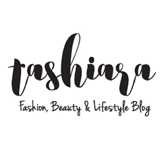Kojic Acid vs Kojic D: Which One Should You Choose for Brighter Skin?

If you’ve ever searched for a solution to hyperpigmentation, melasma, or dark spots, you’ve probably come across Kojic Acid. But recently, a more stable, gentler version called Kojic D (Kojic Acid Dipalmitate) has gained attention. Both promise brighter skin and reduced pigmentation, but they work differently.
So, how do they compare? And which one is better for your skin type and routine?
Let’s break it down.
What is Kojic Acid?
Kojic Acid is a natural by-product of fermented rice and fungi. It's a powerful melanin inhibitor that helps fade dark spots, acne marks, and sun damage by blocking the enzyme tyrosinase, which triggers melanin production.
Used in: Serums, soaps, face washes, and peels.
What is Kojic D?
Kojic Acid Dipalmitate, also known as Kojic D, is an esterified, oil-soluble version of Kojic Acid. It offers similar skin-brightening benefits, but with improved stability and skin tolerance.
Unlike Kojic Acid, which degrades quickly when exposed to light or air, Kojic D stays active longer, making it ideal for use in creams, soaps, and lotions.
Used in: Creams, oil-based serums, moisturisers, and soaps.
Kojic Acid vs Kojic D – Side-by-Side Comparison
| Feature | Kojic Acid | Kojic D (Kojic Acid Dipalmitate) |
|---|---|---|
| Solubility | Water-soluble | Oil-soluble |
| Stability | Unstable in light/air | Highly stable |
| Potency | Strong, fast-acting | Moderate, time-release action |
| Irritation Risk | Moderate to high | Very low |
| Formulations | Serums, toners, face washes | Creams, soaps, oils |
| Best For | Oily, acne-prone skin | Sensitive, dry skin |
| Skin Tone Results | Faster but riskier | Slower but gentler |
Which One is Better?
That depends on your skin type and tolerance:
-
Sensitive or dry skin? Go for Kojic D. It’s milder, moisturising, and less likely to irritate.
-
Oily or acne-prone skin? You may benefit from Kojic Acid in a water-based serum or cleanser.
-
Using a soap? Opt for Kojic D, which holds up better in bar and cream formulations without breaking down.
Real World Use: What Skincare Brands Are Doing
Many modern skincare brands now prefer Kojic D in soaps and lotions due to its stability and shelf-life. Older kojic acid soaps were notorious for turning brown or losing potency, but newer Kojic D-based formulations last longer and stay active.
Still, Kojic Acid remains popular in strong serums and peels where quick action is desired, especially under dermatologist guidance.
Are There Any Side Effects?
Both ingredients are generally safe in cosmetic concentrations.
-
Kojic Acid may cause mild redness, dryness, or sensitivity in some users.
-
Kojic D is considered much gentler and is often well-tolerated even with daily use.
As always, do a patch test and wear sunscreen when using either ingredient to avoid UV-triggered pigmentation.
Final Verdict: Which One Should You Choose?
If you're looking for fast results and your skin can handle active ingredients, Kojic Acid may work better in the short term.
But if you want a gentler, longer-lasting solution for daily skincare, Kojic D Soap is the smarter choice, especially in leave-on products like moisturisers and soaps.








